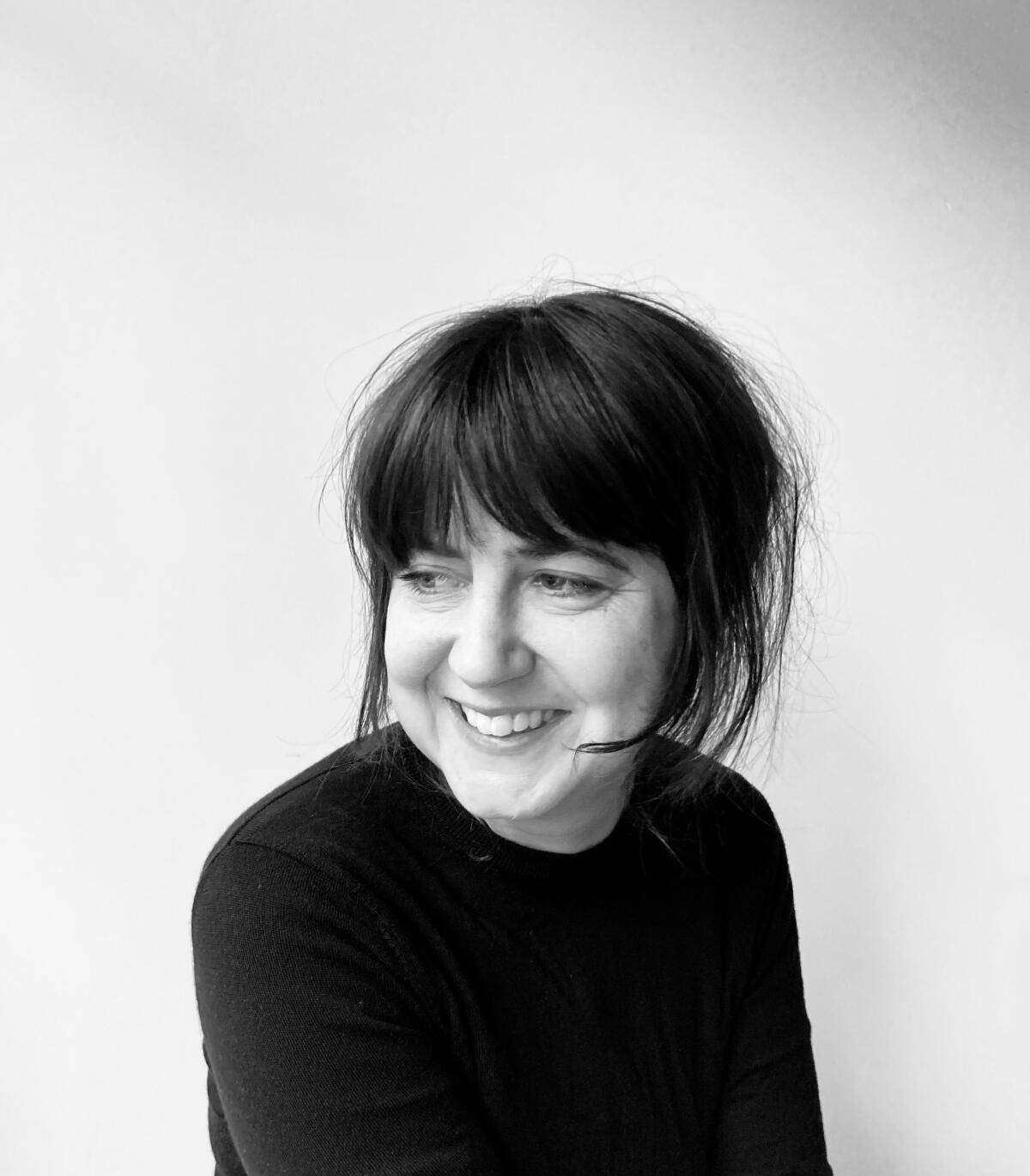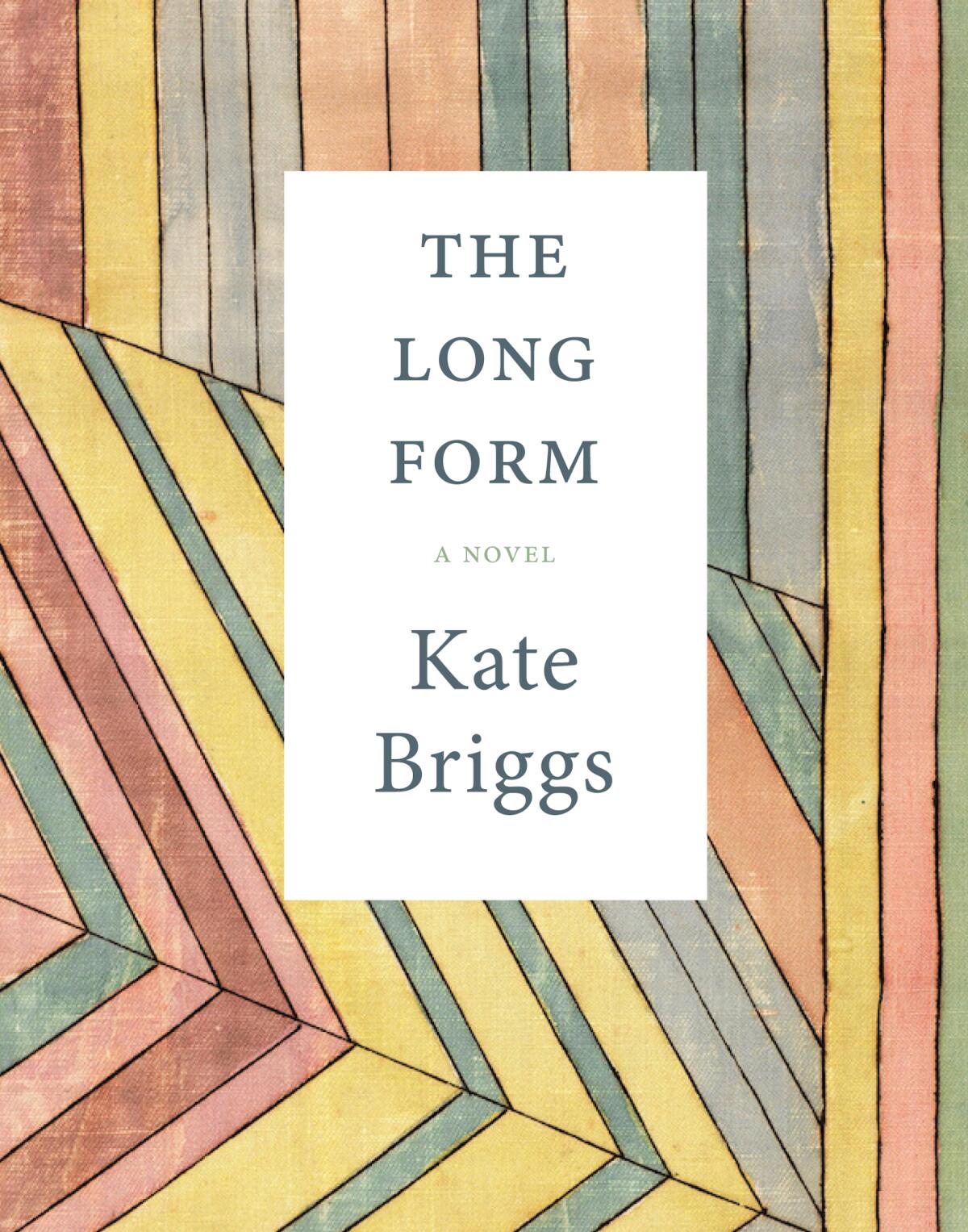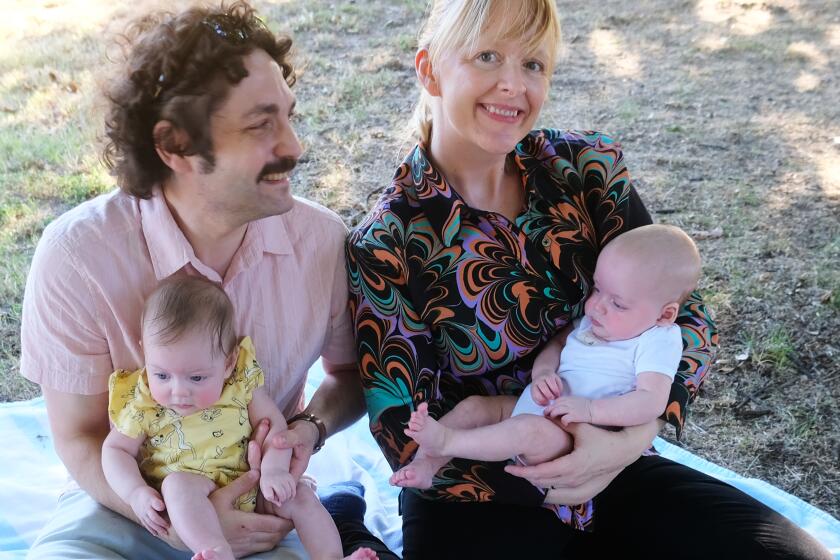How is a book like love? Try holding a baby as you read one

- Share via
Review
The Long Form
By Kate Briggs
Dorothy: 448 pages, $18
If you buy books linked on our site, The Times may earn a commission from Bookshop.org, whose fees support independent bookstores.
Kate Briggs is reimagining how to write about love. Her first novel, “The Long Form,” begins with Helen and her newborn, Rose, on a play mat, which has already “changed the whole inhabitation of the room,” turning it into a “patched field.” A field that holds so much: the baby’s twisting hands and “loose,” wandering eyes, Helen’s warm breath and heavy head, her desire to sleep, the baby’s desire to be held. The mat contains Helen and Rose as they bounce off each other, live off each other, and it bounds what Briggs calls their “pressing project” of learning how to love each other.
The pages in “The Long Form,” as in Briggs’ first book, “This Little Art,” don’t look like those you see in most others. There are diagrams, deep indentations, copious line breaks, white space and emphatic ALL CAPS. Helen explains that she needs “space” and “time” because what she’s trying to get across is “not fully sayable.” This book would need to expand, go long — 430 pages, to be exact. “It would need a new form.” The author extends in many directions to meet the task of articulating love.
From their bookish meet-cute to their L.A. years, married translators Boris Dralyuk and Jenny Croft discuss how they became finalists for the same award.
Briggs began the quest in “This Little Art,” whose title refers to literary translation — a vocation the author pursued against all advice. That nonfiction debut was filled with starts and stops and empty space; sometimes a page contained only a line, or a question.
“[Roland] Barthes has this lovely analogy about what happens when a book is read,” Briggs told an interviewer once. “It gets turned into a piece of lace, he says. It gets turned into this much flimsier thing, a thing full of holes.” The translator, she continues, also “makes her own holey but still somehow whole thing.” Something incomplete, but intact. About halfway through “This Little Art,” Briggs references Barthes’ very last piece of writing (which he left on his desk the day he died): “One Always Fails in Speaking of What One Loves.” Love itself becomes a thing full of holes.

The title of Briggs’ second book is also a reference to Barthes, whose work she has translated, and who called the novel “the long form.” In a 2019 piece for the Believer, Briggs explained that she’s always harbored “this desire for the novel,” particularly for its length, “because a long form can’t be read all at once” — it “has to be interrupted with … life.” This becomes the overarching story of “The Long Form,” as we accompany Helen’s experience of reading Henry Fielding’s “The History of Tom Jones” (considered one of the first Western novels) in one hand while holding her baby in the other. The book unfolds into her day-to-day life with Rose, the baby changing the way Helen reads.
I got the feeling, over those 430 pages, not of interrupting my life by reading it but understanding what it means to interrupt a book with a life. And in this sense the book comes to life in a way none other has for me — not a thing to be consumed but a force exerting its own energy on me.
In ‘The Baby on the Fire Escape: Creativity, Motherhood, and the Mind-Baby Problem,’ Julie Phillips looks to 20th century artist-mothers for answers.
“The Long Form” oscillates between fiction and essay, mimicking Fielding’s own book. Briggs’ voice takes over in the essay portions, and I would have been interested to see them dominate the entire book. In fact “The Long Form” feels like a novel leaning into an essay. True to the latter form’s intentions, it tries on various narrative styles to grasp at its subject, to convey how love is the invisible force working on everything: on Helen and her baby as they share a small apartment, on Helen as she reads between feedings, on the houseplant that bends toward the light.
Love is the medium of the book, shaping and moving it, opening and deepening it. Its drive is toward a completion that will never arrive. “LOVE” is about the “momentum of wanting to know, wanting to find out more,” Helen thinks. Love is what pushes a reader to turn the page, to allow it into her life.
Ultimately, Briggs’ books are declarations of love for the book as a form: full of possibility. They “fail” at what they try to speak of, and they never really end. Like love, they leave an open space.
More to Read
Sign up for our Book Club newsletter
Get the latest news, events and more from the Los Angeles Times Book Club, and help us get L.A. reading and talking.
You may occasionally receive promotional content from the Los Angeles Times.










